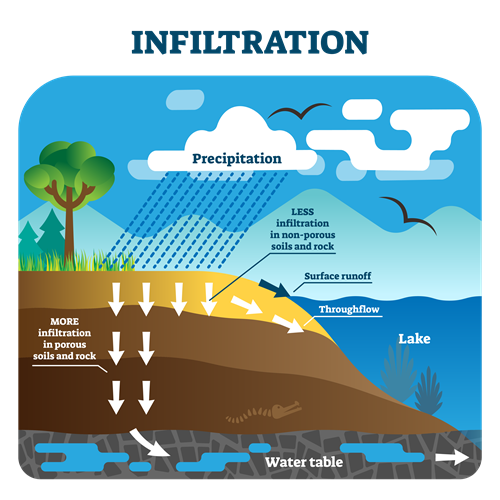PDF chapter test TRY NOW
Infiltration
The process by which water on the ground surface enters the soil is called Infiltration.
Infiltration is governed by two forces, gravity and capillary action. Temporarily it allows the soil to retain water, making it available for plants' use and organism in the soil. In the process of infiltration, rainwater in the surface soaks into the ground through the soil strata and underlying rock layers. Through springs or low spots down hills, some of this water ultimately returns to the surface.
Some water that recharges the underground water table is called groundwater. Factors like physical characteristics of the soil, vegetative cover, moisture content of the soil, soil temperature and rainfall intensity influence the rate of infiltration. The terms infiltration and percolation are often used interchangeably.

Percolation
The downward movement of water through soil and rock layers is called Percolation.
Infiltration occurs near the surface of the soil and delivers water from the surface into the soil and plant root zones. Percolation takes place after infiltration. It takes the infiltrated water through the soil profile and rock layers which leads to groundwater or become a part of the sub-surface run-off process. Thus, the flow of water from the unsaturated zone to the saturated zone is called percolation.
